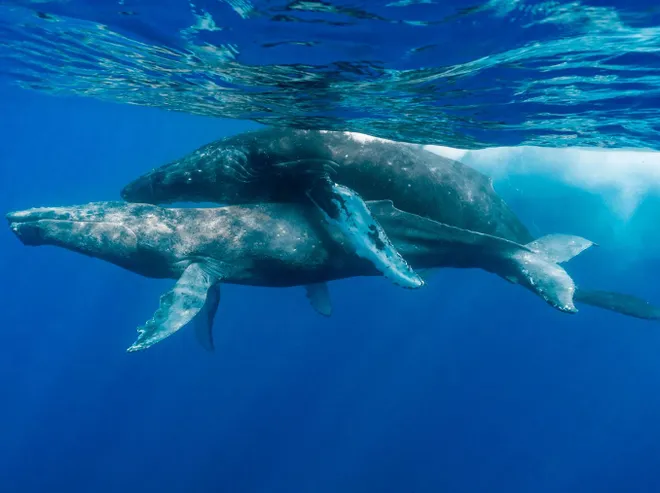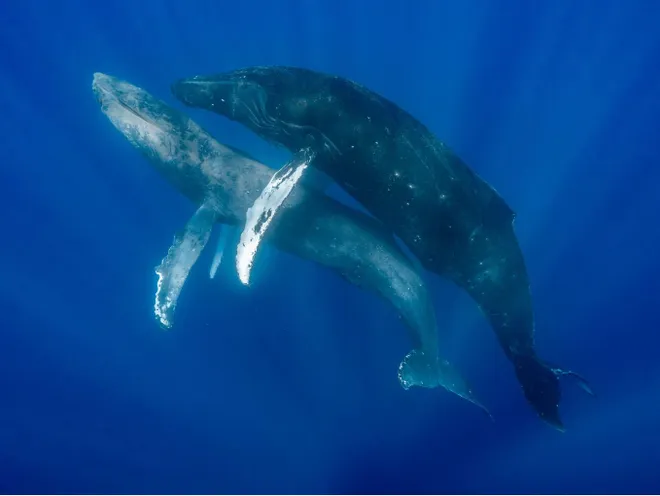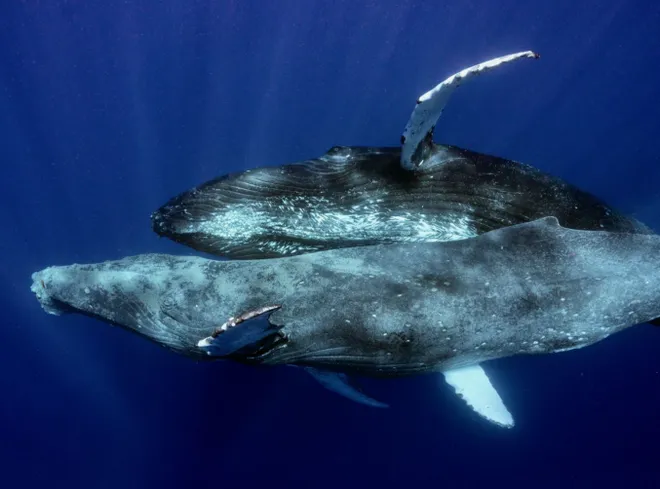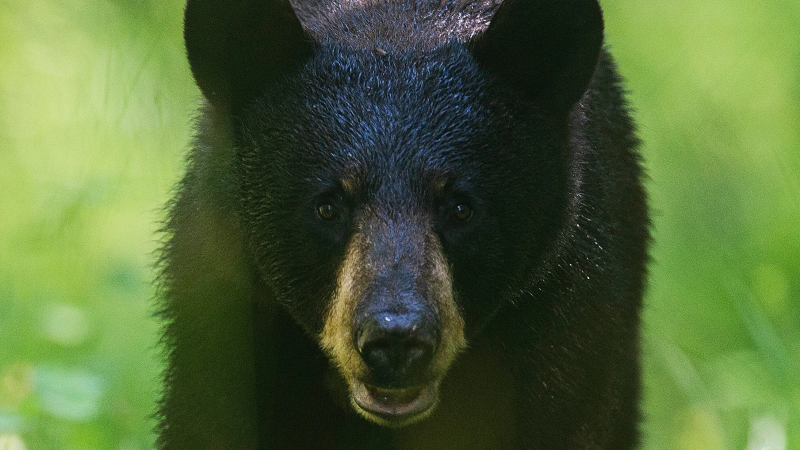Photos of male humpback whales copulating gives scientists peek into species' private sex life

Two male humpback whales were photographed having sex in Hawaii, with experts calling the encounter a “scientific breakthrough” for a species whose sexual behavior has largely remained a mystery.
There are still things scientists don’t know about humpback whales, especially when it comes to the species’ sex life.
It’s an area that remains “largely undescribed” by scientists, who have spent decades studying the social behavior of humpback whales, according to a study published in the journal of Marine Mammal Science.
These photographs are not only the first report of sexual activity between two male humpback whales, but also the first time sexual activity of any kind among the species has been documented, the study reads.
“This discovery challenges our preconceived notions about humpback whale behavior,” Stephanie Stack, a whale researcher with the Pacific Whale Foundation, said in a news release.
“While we have long recognized the complex social structures of these incredible creatures, witnessing the copulation of two male whales for the first time is a unique and remarkable event,” Stack said.
Two male humpback whales found copulating
The whales were captured in images on Jan. 19, 2022 by Maui based photographers Lyle Krannichfeld and Brandi Romano. The photos were surfaced in the February report.
The photographers, aboard a private boat, encountered the two whales a little over a mile west of the Molokini crater, off the island of Maui, Hawaii.
The whales approached the boat slowly, appearing at the surface and just below the surface, one following the other.
The photographers noted an “unusual brown coloration” on the body of one whale, indicating poor health. The two whales circled the boat several times, interacting with each other, the report says.

The whale with the skin condition was displaying “slow and low energy movements,” which was likely caused by whale lice and emaciation.
The brown whale was making its best attempt to swim away from the other whale, circling the boat as an attempt to block or seek refuge.
The other whale caught up to it, engaging in copulation briefly before diving below the surface.
The whale with the discoloration remained near the surface for a few more moments, returning to the depths of the ocean as soon as the other whale was out of sight.
Why researchers are intrigued by the encounter
Humpback whales typically engage in copulation for reproduction purposes, migrating from polar waters to tropical waters to do so, the study says.
It's not necessarily uncommon for a species to engage in non-reproductive sexual behavior or for species of the same sex to copulate, according to the study.

What makes this situation unique is that one of the male humpback whales involved was unhealthy, "raising intriguing questions about the nature of such behavior in humpback whales,” according to the study.
Stack writes that what adds another layer of complexity is the fact that the only other documented instance of a humpback whale engaging in copulation occurred in 1998, when a fellow researcher observed a humpback whale have sex with another whale that had just died.

“The limited data available on this behavior emphasizes the need for further research to explore the motivations, implications, and potential factors influencing such interactions, especially in the context of healthy individuals,” Stack wrote.
Whether two healthy male humpback whales would copulate is currently unknown, but the occurrence does open “new avenues for research into the broader spectrum of cetacean behavior, social structures, and the factors influencing their reproductive strategies," the report says.
Disclaimer: The copyright of this article belongs to the original author. Reposting this article is solely for the purpose of information dissemination and does not constitute any investment advice. If there is any infringement, please contact us immediately. We will make corrections or deletions as necessary. Thank you.

